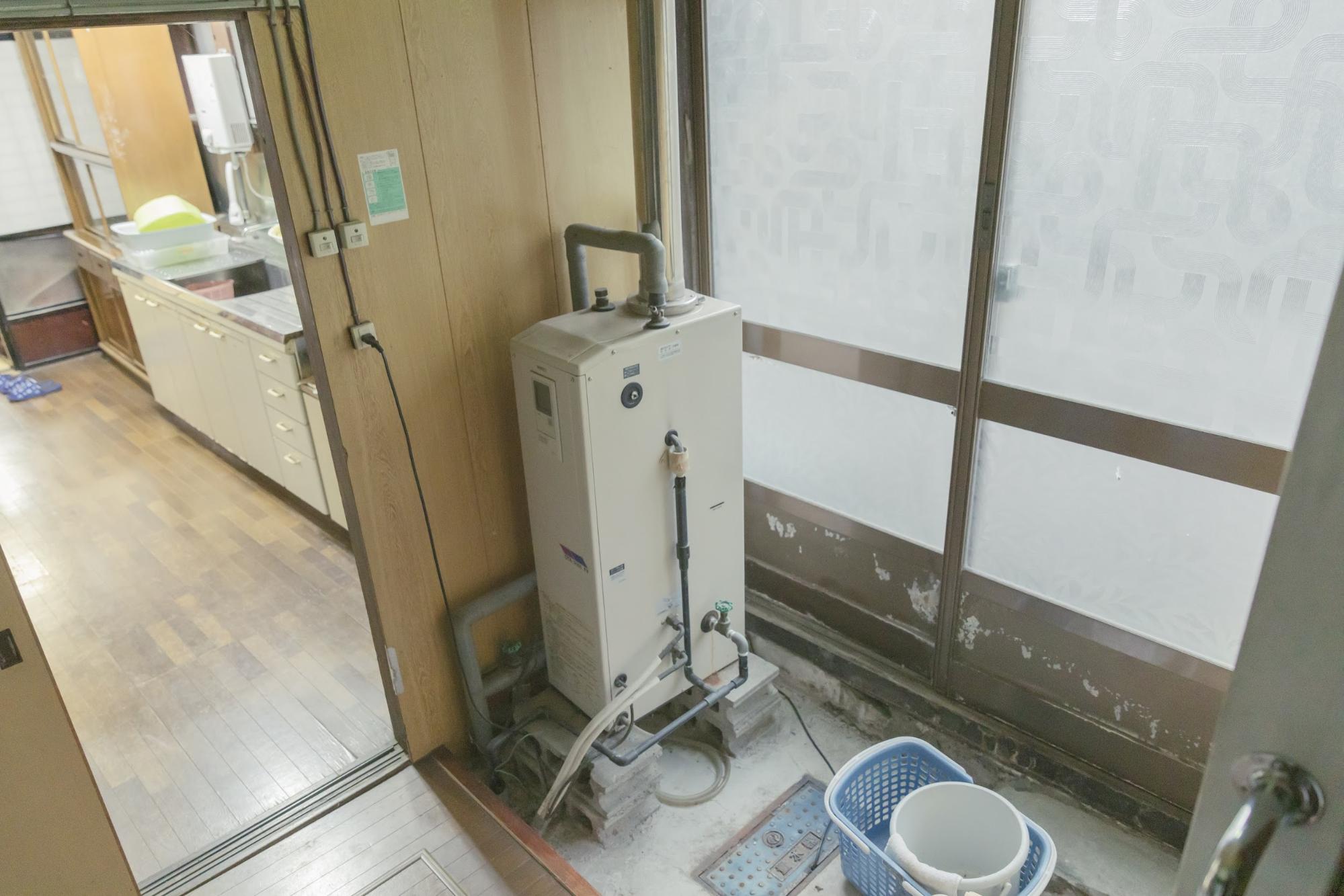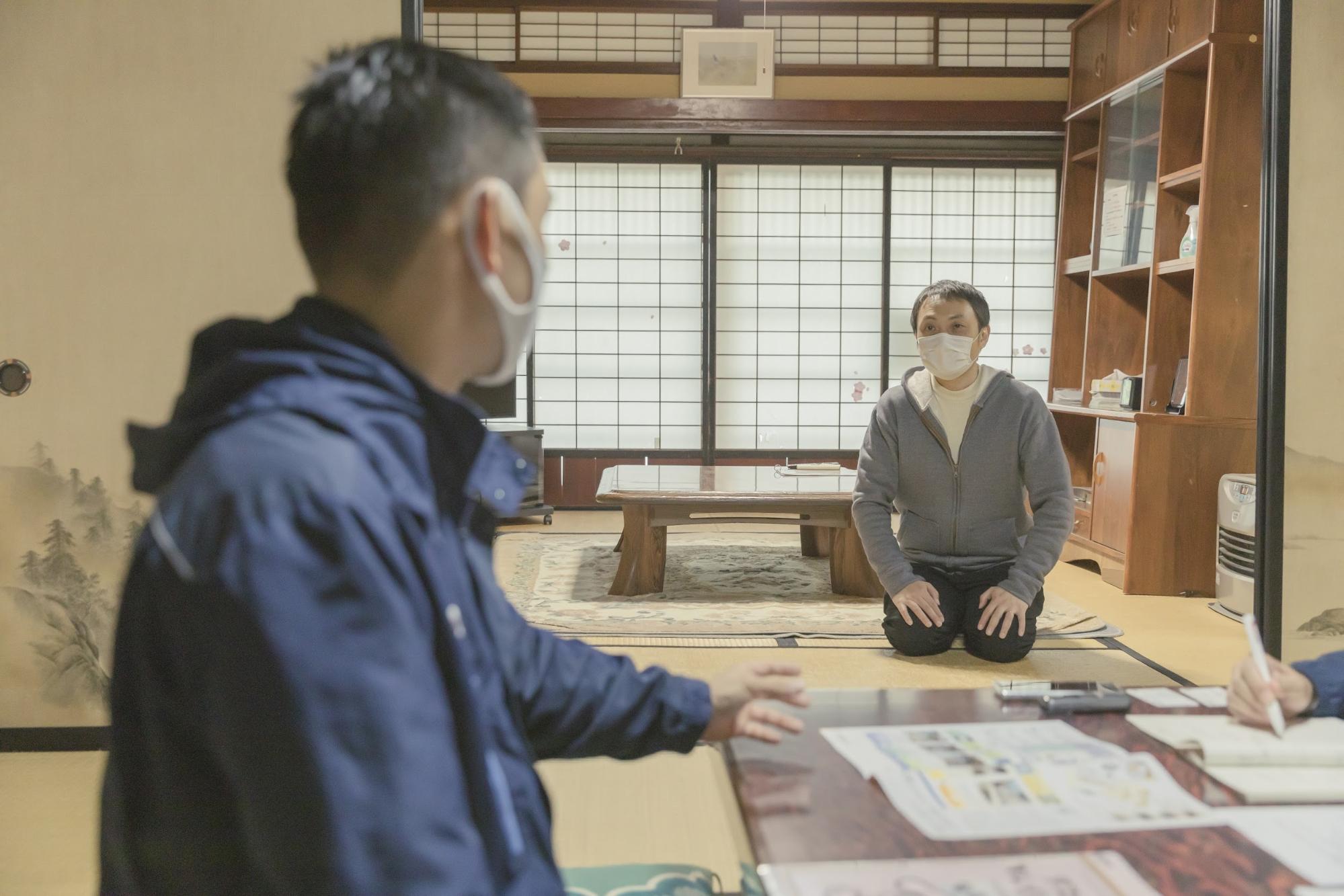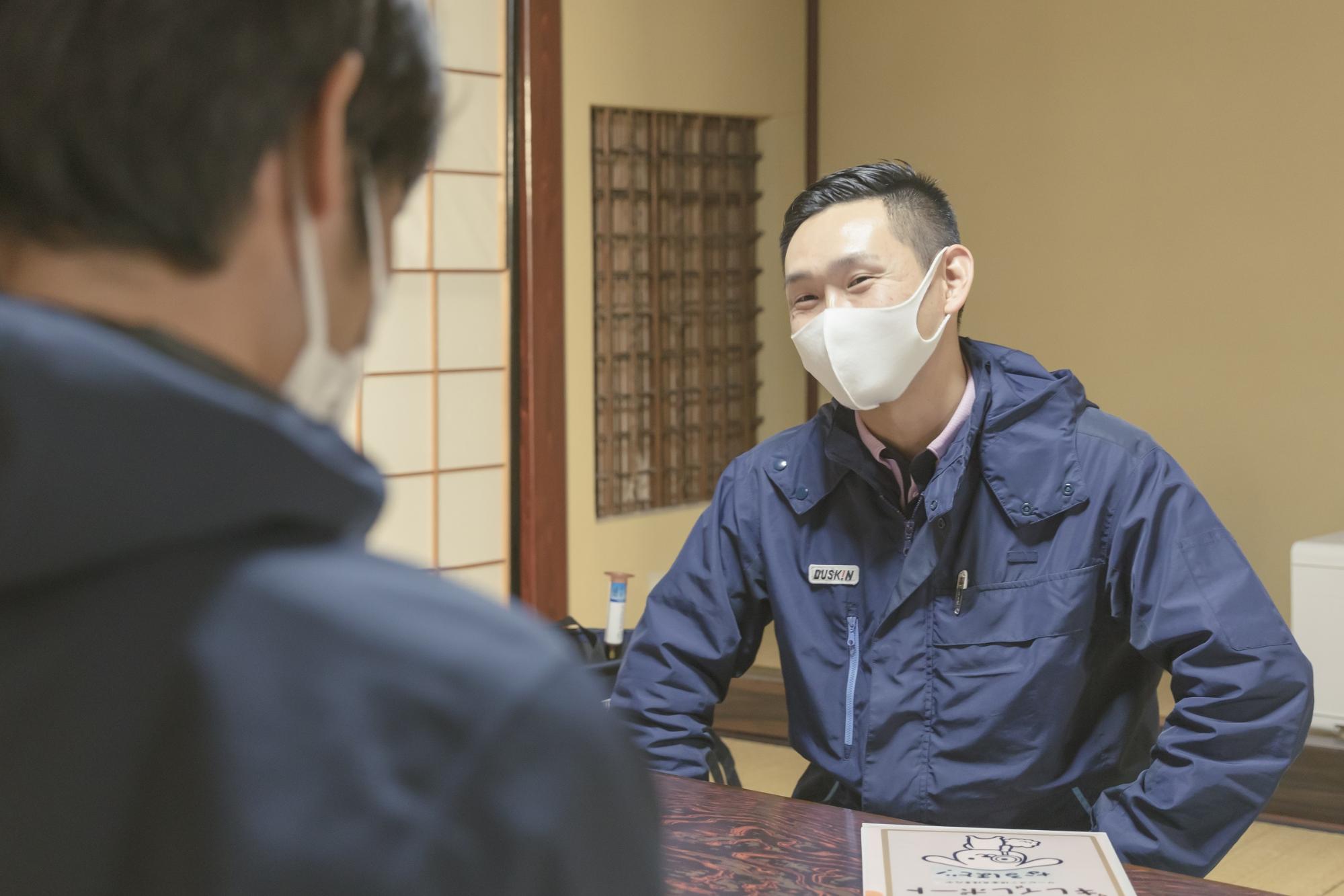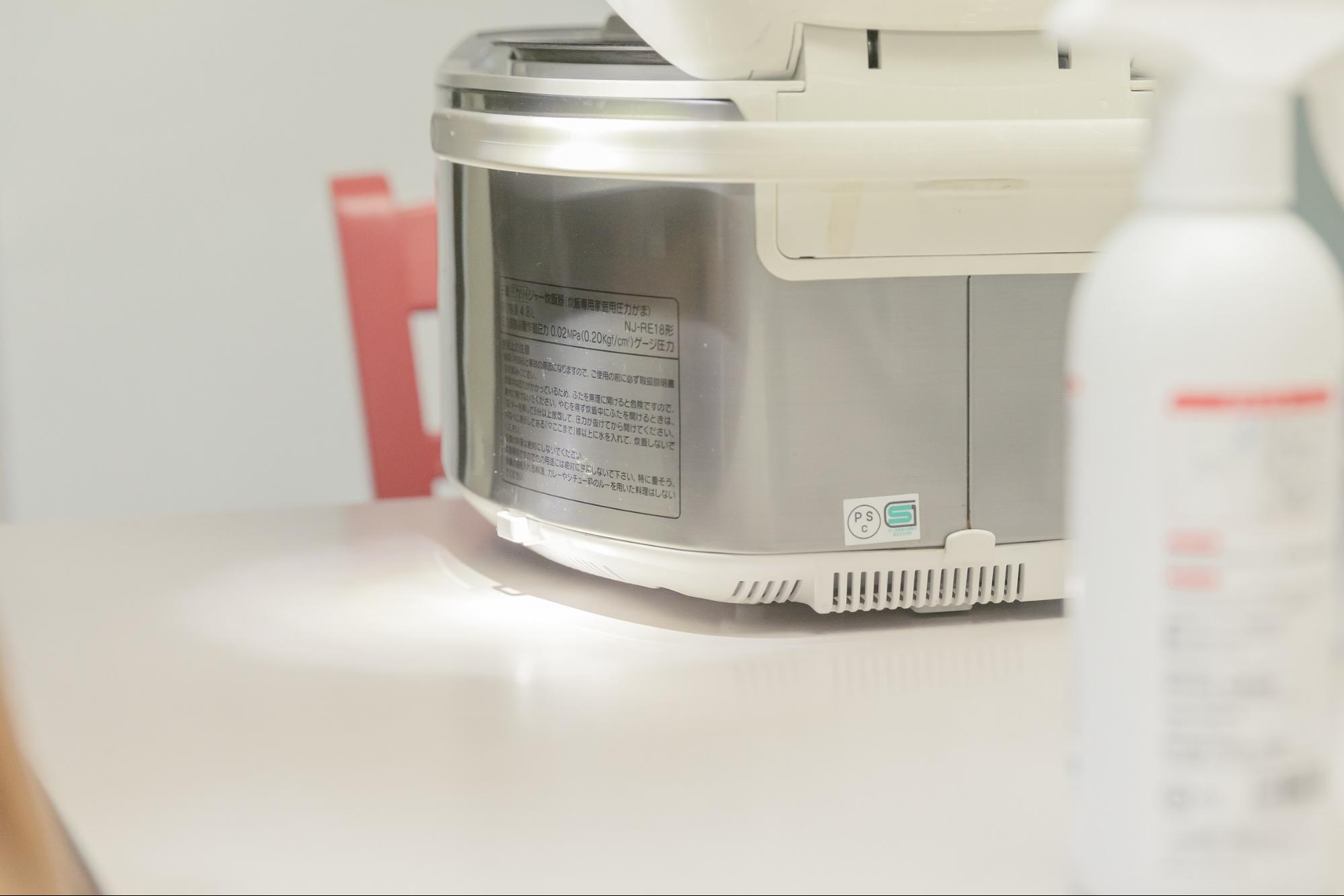The 75/25 Rule
Akashi: Takigawa-san, may I interrupt for a moment? I’m Akashi, the producer of HOKUROKU.
When renovating old houses into commercial facilities, I address cockroach control thoroughly. I despise cockroaches.
I always imagine myself as a cockroach to figure out what entry routes it might use and when it would likely enter, and I plan countermeasures based on that.
However, I have a fundamental question.
Earlier, we discussed the wide range of activities of black cockroaches and heard that they live behind manholes.
If that’s the case, why would cockroaches take risks coming into human homes?
In the photo, Hiroyuki Akashi is at the back. He is sitting in a formal kneeling position, asking for guidance.
If a cockroach enters a human dwelling, it increases the chances of encountering humans, which also raises the risk of being killed by humans, right?
Takigawa: The reason cockroaches invade human dwellings is because of the environment they prefer. Cockroaches first seek dark, narrow hiding spots.
If that were all, there would be no need for them to enter human homes. However, there is the 75/25 rule. Cockroaches remain still for about 75% of the day and become active during the remaining 25% of the night when they begin to search for food and water.
Originally, they were tropical insects that lived in warm regions, so they prefer temperatures around 27°C, or slightly higher or lower.
All of these factors create the ideal, comfortable environment that human homes provide.
It was once believed that cockroaches couldn’t survive in Hokkaido, the northernmost island of Japan, where temperatures can drop as low as -30°C.
However, with global warming, the increase in high airtightness and insulation in buildings, and advancements in heating equipment, cockroaches have now been found in Hokkaido as well.
Sakamoto: There’s a story that cockroaches remain still 75% of the time during the day and are active 25% of the night.
The impression of them moving around is so strong that I always thought they were constantly on the move.
Now, let’s imagine that you unexpectedly encounter one of them while they’re moving.
As a professional, what would be the ideal way to handle that situation?
Takigawa: If there’s no insecticide nearby, you should crush it and then carefully dispose of its carcass, taking precautions with the germs.
Sakamoto: I remember hearing that if a cockroach is carrying eggs, crushing it will cause the eggs to scatter and lead to more reproduction.
Takigawa: If you crush it, the eggs will be crushed as well. The real issue is if you fail to kill it with insecticide quickly.
Sakamoto: What’s the problem with that?
Takigawa: If you can’t kill it with insecticide, there’s a chance that, in its last-ditch effort, the cockroach will detach its egg case.
Sakamoto: It’s like when Piccolo Daimao from the manga Dragon Ball spits out eggs just before being defeated by Goku.
Takigawa: Exactly.
Sakamoto: As a professional like you, could you crush a cockroach with your fist, like slamming your hand onto a low table?
Takigawa: That’s definitely not possible (laughs). I’d crush it with my foot.
Sakamoto: So, you’d directly crush it with your foot?
Takigawa: That’s dirty too, so I’d cover it with something like a board and crush it.
Sakamoto: So, making sure to crush the cockroach, this orthodox approach is the most effective method, isn’t it?
By the way, just as an aside, has Takigawa-san been responsible for pest control since joining your current company?
Takigawa: No, that’s not the case. I used to be in a different department. I transferred to my current department.
Sakamoto: When you got the transfer order, did you feel like saying “Yay”?
Takigawa: Oh no (laughs), I was very much like everyone else and didn’t like cockroaches.
Sakamoto: So, you reluctantly accepted the transfer order?
Takigawa: I gradually got used to it through the job, but even now, I can never bring myself to like cockroaches (laughs).
Cockroach Urban Legends
Sakamoto: There are other urban legends, like the previous one. For example, there’s a story that cockroaches are weak against herbs.
Takigawa: I’ve heard such stories. However, from what I’ve seen in the field, I don’t think herbs alone can easily prevent cockroaches. They’re not that simple a pest to deal with.
Sakamoto: There are others too. One is the idea that cockroaches aren’t completely germ-ridden and dirty creatures. What do you think about that?
Takigawa: For cockroaches raised in sterile conditions for research purposes, that may be true.
However, cockroaches in the natural world can’t be raised in a sterile environment. The cockroaches we encounter in real life are not hygienic.
Sakamoto: What kinds of bacteria might they carry, for example?
Takigawa: They might carry food-poisoning bacteria. If such cockroaches come into contact with cooking utensils or dishware in places like restaurants, they could potentially cause food poisoning outbreaks.
Sakamoto: A friend who used to work part-time at a family restaurant once told me they saw a small cockroach in a salad served at the restaurant.
It was probably a German cockroach. As you can see, contamination in food could be a concern.
Takigawa: German cockroaches prefer to breed near heat sources in kitchen equipment.
When running a restaurant, if you’re trying to keep costs down and buy second-hand equipment, that’s when issues can arise.
If, for example, cockroach eggs are left in used kitchen equipment, they could hatch in your restaurant and contaminate the food after being delivered.
Sakamoto: Do German cockroaches not breed in household appliances?
Takigawa: Generally, that’s not the case. However, there was one instance where German cockroaches bred inside the heat source of a household rice cooker.
The rice cooker was placed at the interview location. The photo is for illustration purposes. Takigawa-san knows of a case where German cockroaches bred behind the mesh at the back of the rice cooker.
When purchasing second-hand equipment or appliances, it’s highly recommended to clean them thoroughly before use.
Sakamoto: When you say “cleaning,” what specifically should be done?
Takigawa: If you disassemble it, there’s a risk of breaking the equipment or appliances, as you may be unable to reassemble them properly.
I think the most effective approach is to clean the visible parts thoroughly first, and for easily removable components, like the door gasket of a refrigerator, remove and clean them. These are practical measures to take.
Sakamoto: That’s a terrifying story. Most people who hear this will clean second-hand appliances or equipment before using them.
(Deputy Editor’s Comment: More people are buying second-hand cooking appliances online. Make sure to wash them thoroughly before use.
Next time, we’ll ask about how professionals conduct cockroach habitat investigations and how much they cost. It seems like it would be expensive to hire a professional, but how much does it cost?)













Like op-ed
For this article, we are waiting for your positive, constructive and responsible opinions and comments. Only members can post.
Only members can post. please login.